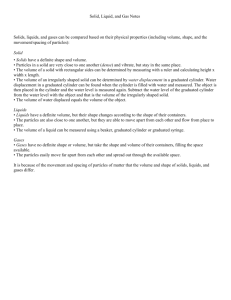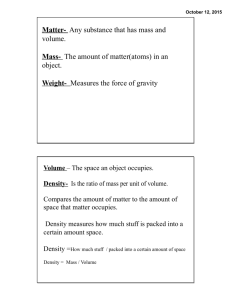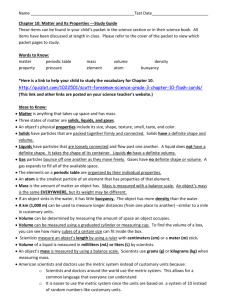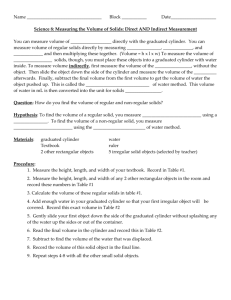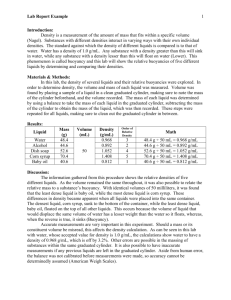Lesson 1 Properties of Matter
advertisement
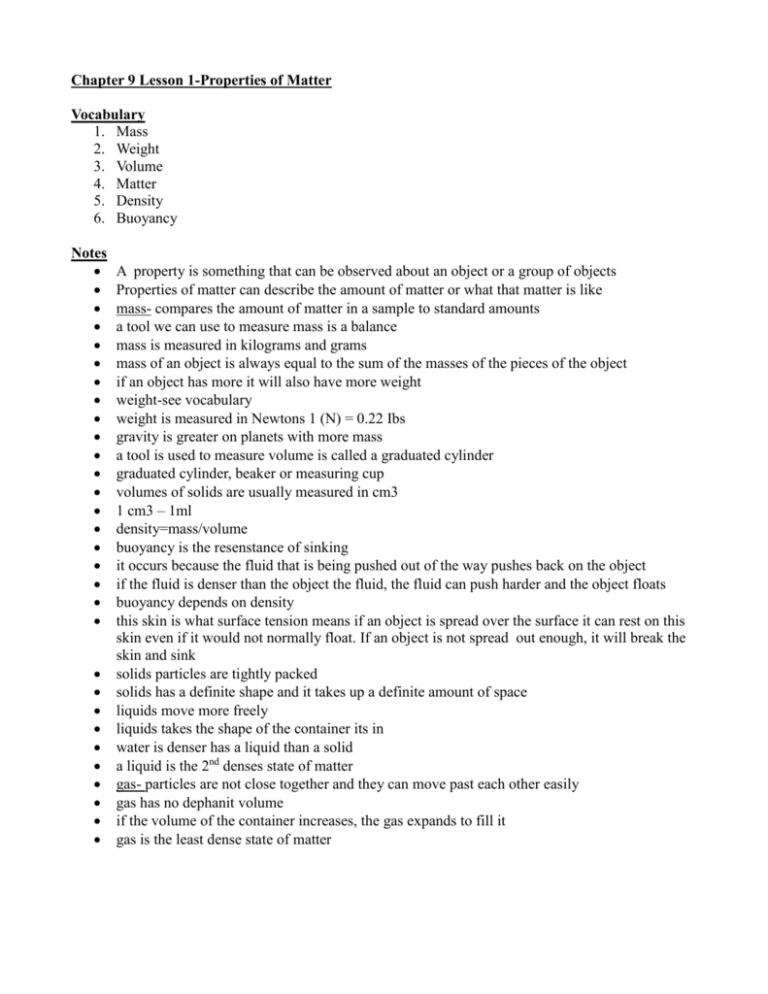
Chapter 9 Lesson 1-Properties of Matter Vocabulary 1. Mass 2. Weight 3. Volume 4. Matter 5. Density 6. Buoyancy Notes A property is something that can be observed about an object or a group of objects Properties of matter can describe the amount of matter or what that matter is like mass- compares the amount of matter in a sample to standard amounts a tool we can use to measure mass is a balance mass is measured in kilograms and grams mass of an object is always equal to the sum of the masses of the pieces of the object if an object has more it will also have more weight weight-see vocabulary weight is measured in Newtons 1 (N) = 0.22 Ibs gravity is greater on planets with more mass a tool is used to measure volume is called a graduated cylinder graduated cylinder, beaker or measuring cup volumes of solids are usually measured in cm3 1 cm3 – 1ml density=mass/volume buoyancy is the resenstance of sinking it occurs because the fluid that is being pushed out of the way pushes back on the object if the fluid is denser than the object the fluid, the fluid can push harder and the object floats buoyancy depends on density this skin is what surface tension means if an object is spread over the surface it can rest on this skin even if it would not normally float. If an object is not spread out enough, it will break the skin and sink solids particles are tightly packed solids has a definite shape and it takes up a definite amount of space liquids move more freely liquids takes the shape of the container its in water is denser has a liquid than a solid a liquid is the 2nd denses state of matter gas- particles are not close together and they can move past each other easily gas has no dephanit volume if the volume of the container increases, the gas expands to fill it gas is the least dense state of matter




